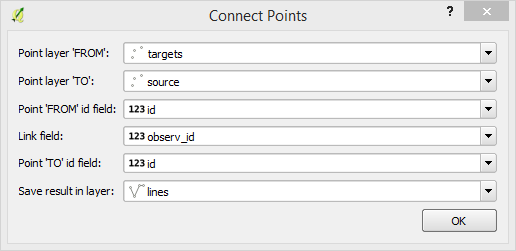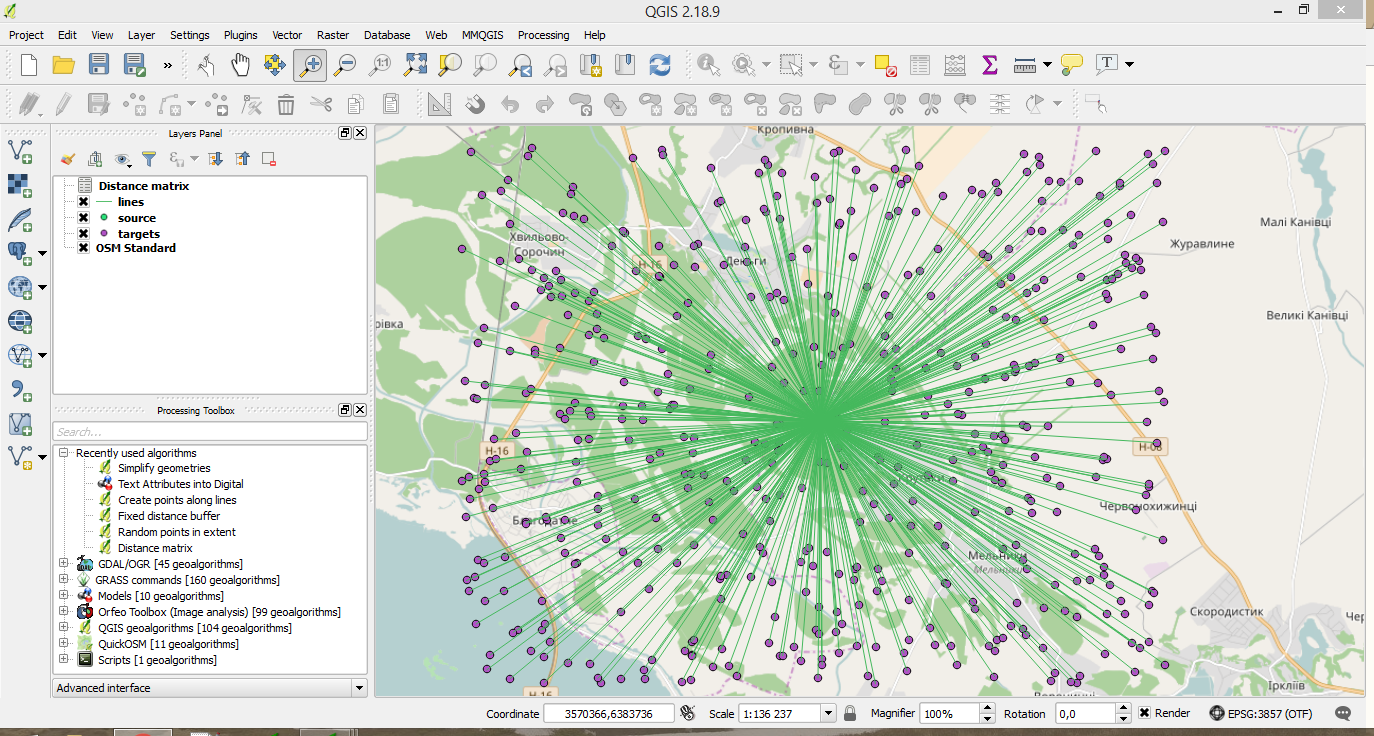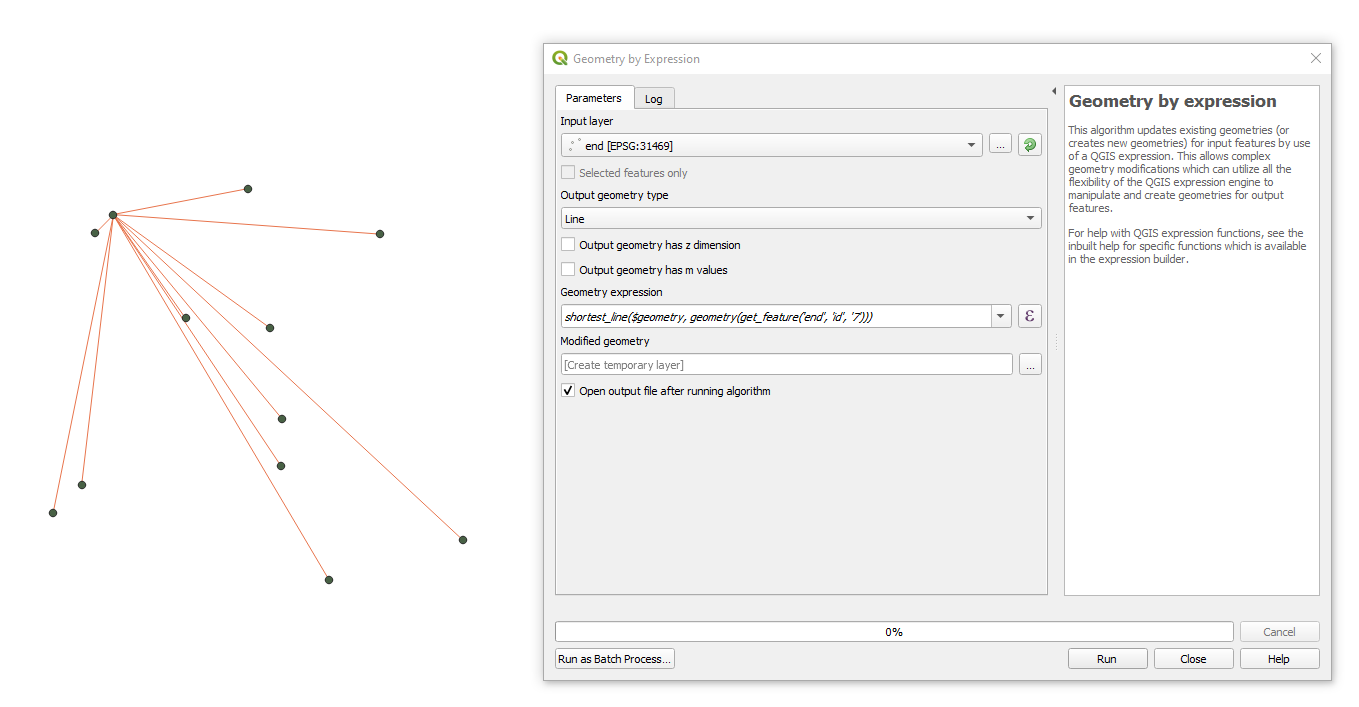I have a layer with about 500 single points. Now I want to measure the distance between each of these points and one specified observation point.
I need the distance to show how far away from the observation point each of these points was located to build a table for detection probability.
I already tried lots of Plugins (Hub Distance, NNJoin, ...), but simply can't find a proper way to calculate what I need.









